Historical Stadium Reopens in One of Sports’ Best Comeback Stories

A stadium is a factory of inspiration. Lay some sod, turf or cinder, mark its boundaries with appropriate exactness, and let loose the human will—the need—to test our physical boundaries.
At their best, these secular cathedrals also inspire those who sit in the stands that ring these fields of endeavors. They become our town halls, in which the mere act of being there makes us a part of the community—and from which the community draws identity.
On the afternoon of Sept. 18, 1932, Paterson, N.J., Mayor John V. Hinchliffe officially dedicated a grand Art Deco piece of architectural inspiration for his diverse and industrious city. “On ground sacred to this city,” as the Paterson Morning Call reported, Hinchliffe had the honor of opening a stadium in his family’s name. With its white-washed concrete walls, red terracotta roof tiles and five gabled towers, Hinchliffe Stadium made for an elegant horseshoe of dreams.
“It not only affords the opportunities for physical development and entertainment for the thousands who enjoy physical contests,” Hinchliffe told the crowd that day, “but it will serve as well as a civic center, as an ideal place for public entertainment of all kinds on a large scale.”
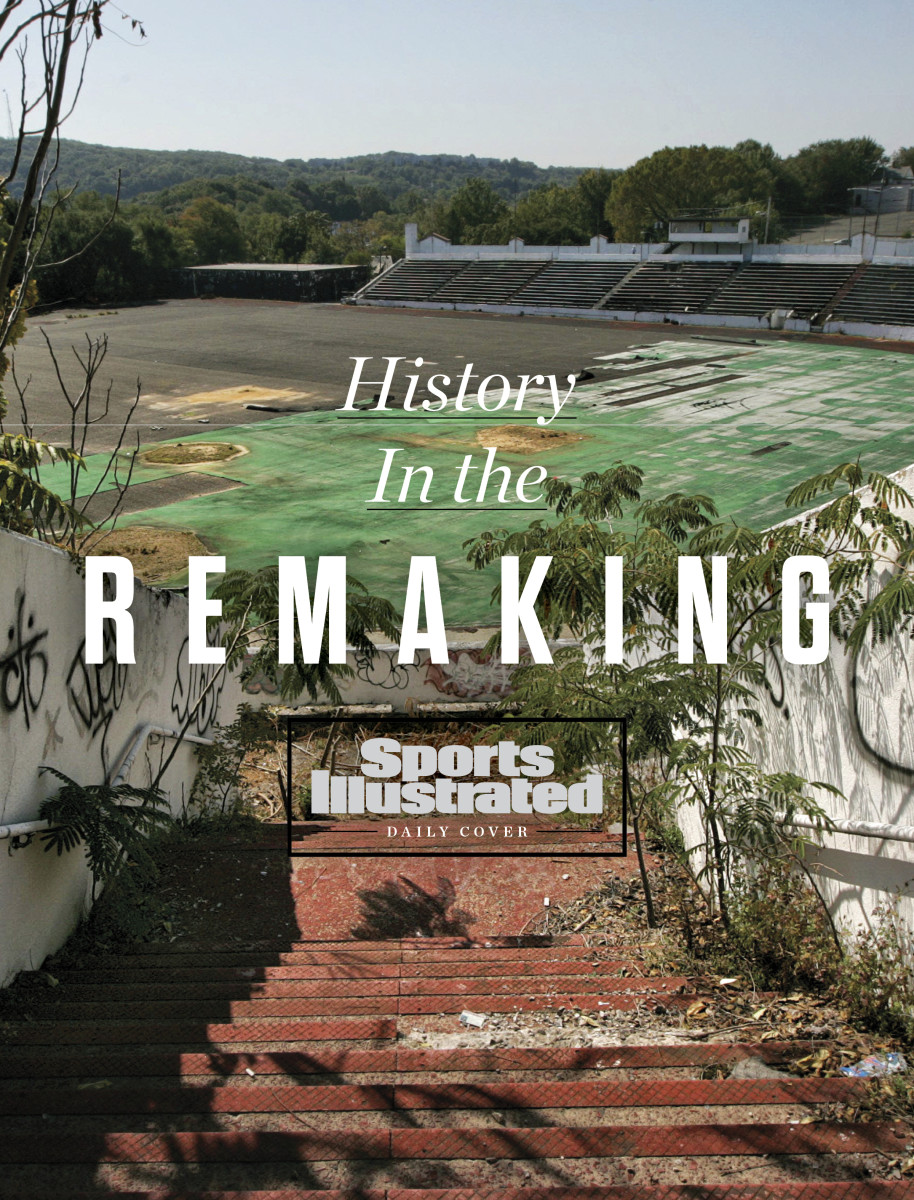
The mayor boasted that 70% of the city’s population lived within a 15-minute walk of the stadium. Hinchliffe Stadium served its civic role well, especially as home to Negro Leagues baseball, the embodiment of opportunity for those otherwise denied it. Over four rollicking decades, everyone from Josh Gibson to Jim Thorpe to Vince Lombardi to Lou Costello to Duke Ellington to thousands of high school athletes, including me, played there—until urban decay and financial neglect left the old gem a crumbling, weed-and-graffiti-covered forgotten eyesore.
What was lost has been found again. On Friday, Andre Sayegh, the second-term Paterson mayor, will proudly reopen Hinchliffe Stadium with the same hope Hinchliffe did 91 years ago. Both mayors were driving forces in the making of the stadium as a center of civic pride.
It is the best kind of sports story: the comeback. And it is the best kind of urban renewal: honoring a history of opportunity by coming together to make it happen all over again for a new generation and beyond.
As one of only two surviving Negro Leagues ballparks (Rickwood Field in Birmingham is the other), Hinchliffe is a National Historic Landmark that gives tangible, meaningful honor to an important chapter in U.S. history. It is once again a living history book whose story needs to be told. On this bluff 400 feet from Paterson’s stunning 71-foot Great Falls that once inspired Alexander Hamilton to envision the first planned industrial city in America, Hinchliffe served as home to the New York Black Yankees from 1933 to ’37 and ’39 to ’45, and the New York Black Cubans from ’35 to ’36.
The “sacred grounds” back then referred to an area known as Monument Heights because of a cemetery and a Civil War monument located on that bluff. Ninety-one years later, these are the sacred grounds where more than 20 future Hall of Famers once played, including Gibson, Paterson native Larry Doby, Monte Irvin, “Cool Papa” Bell, Judy Johnson and Satchel Paige. It is likely Jackie Robinson also played there with the 1945 Kansas City Monarchs.
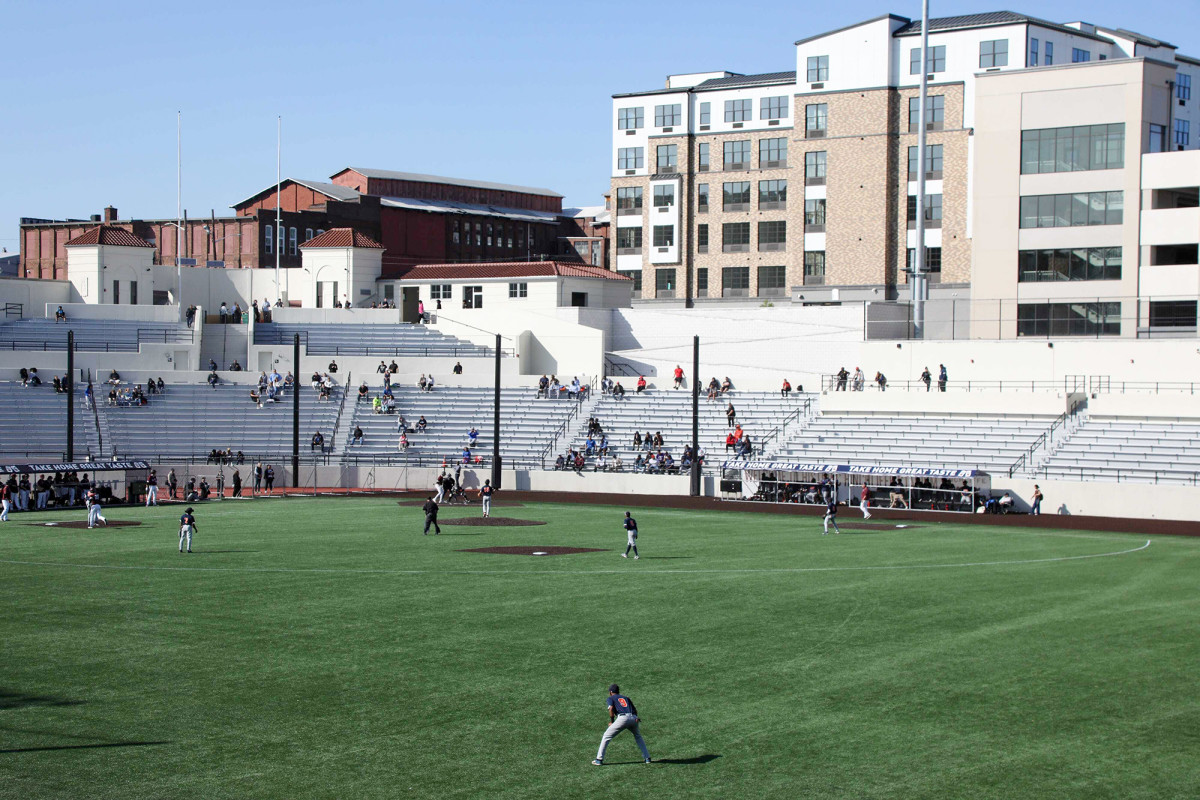
Baseball will again be played at Hinchliffe. The New Jersey Jackals, an independent team, will move there from nearby Little Falls. Their owner, Al Dorso, is a Paterson native. It will be the first professional baseball played there since 1950—and the first professional ball games played within the confines of a U.S. National Park (Paterson Great Falls).
Hinchliffe also will again host school and amateur events, including ball games, graduations and concerts. High school ballplayers will be able to play on the same grounds and within the same walls as Negro Leagues legends. Hinchliffe will become the gathering place and source of pride it was for so many years. Sixteen miles from New York City, Paterson is a melting pot of 157,000 people over nine square miles, making it the second-most densely populated city in the country.
The arc of Hinchliffe is the arc of Paterson, a city once known as “Silk City.” In the 1880s, Paterson manufactured half of all silk made in the U.S. It later transitioned to manufacturing airplane engines. The stadium’s prominence rose and fell with the city’s fortunes. It rises again as a monument to community will.
The Hinchliffe story begins amid the Great Depression, when local leaders caught the energy of a stadium building boom as sports rose in importance in 1920s America. The Olmsted brothers, sons of famed architect Frederick Law Olmsted, were hired as landscape architects of the public works project. John Shaw of the local Fanning and Shaw architectural firm, known for its schools and churches, designed the stadium. With its gabled towers and bronze relief representations of Olympic athletes crafted by Paterson sculptor Gaetano Federici, Shaw chose an Art Deco/moderne style with a wink toward classical to inspire young athletes.
The stadium unofficially opened in July 1932 around celebrations of George Washington’s bicentennial birthday. The first games were a doubleheader between the Paterson Professionals and the House of David, the legendary bearded team from Michigan. The name “Hinchliffe City Stadium” was chosen at the September dedication to honor Mayor Hinchliffe and his uncle, also named John Hinchliffe, who had also served as mayor of Paterson and made his fortune in Paterson’s booming brewery business before Prohibition.
For the next four decades Hinchliffe Stadium served diverse populations as a bustling social, cultural, athletic and educational hub. (Central High students would gather for a graduation picture on the field while spelling out the last two digits of their graduation year in the manner of a band formation.)
Negro Leagues games were important from the start. In its second year, Hinchliffe hosted the 1933 Colored Championship of the Nation, the equivalent of a Negro Leagues World Series, with the Philadelphia All-Stars prevailing over the Black Yankees and Pittsburgh Crawfords. Hinchliffe also hosted numerous barnstorming games, including Thorpe and his Oklahoma Indians; the 1933 Pirates, with six Hall of Famers, including coach Honus Wagner, who was discovered by scouts while playing in Paterson in 1896; and Dizzy Dean and the 1934 Cardinals 10 days after they won the World Series.
The beehive of activity also hosted amateur and professional football (which is how Lombardi came to play there), auto racing, boxing, track and field, rodeo, concerts (Ellington, Paterson-born Costello, The Andrews Sisters, and Sly and the Family Stone made appearances), civic festivals and high school sports. When Central played Eastside in the first Thanksgiving football game played at Hinchliffe, in 1932, a crowd of 13,000 attended, a few thousand past capacity thanks to additional temporary bleachers and standing room areas.
Babe Ruth and Jack Dempsey attended Diamond Gloves amateur boxing tournaments in the 1930s and ’40s. The Bambino came to Hinchliffe in 1939, ’43, ’46 and ’47, when The Morning Call noted he was “recovering from a serious illness.” He died 13 months later.
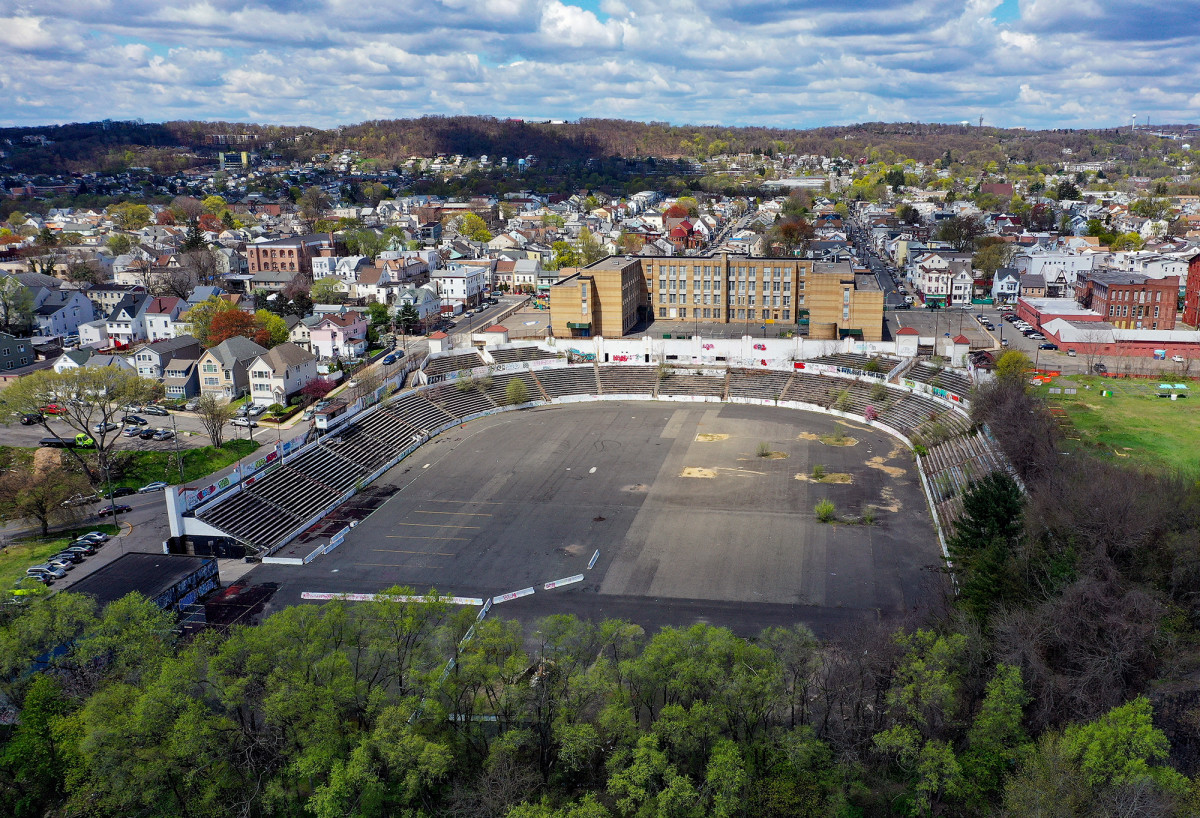
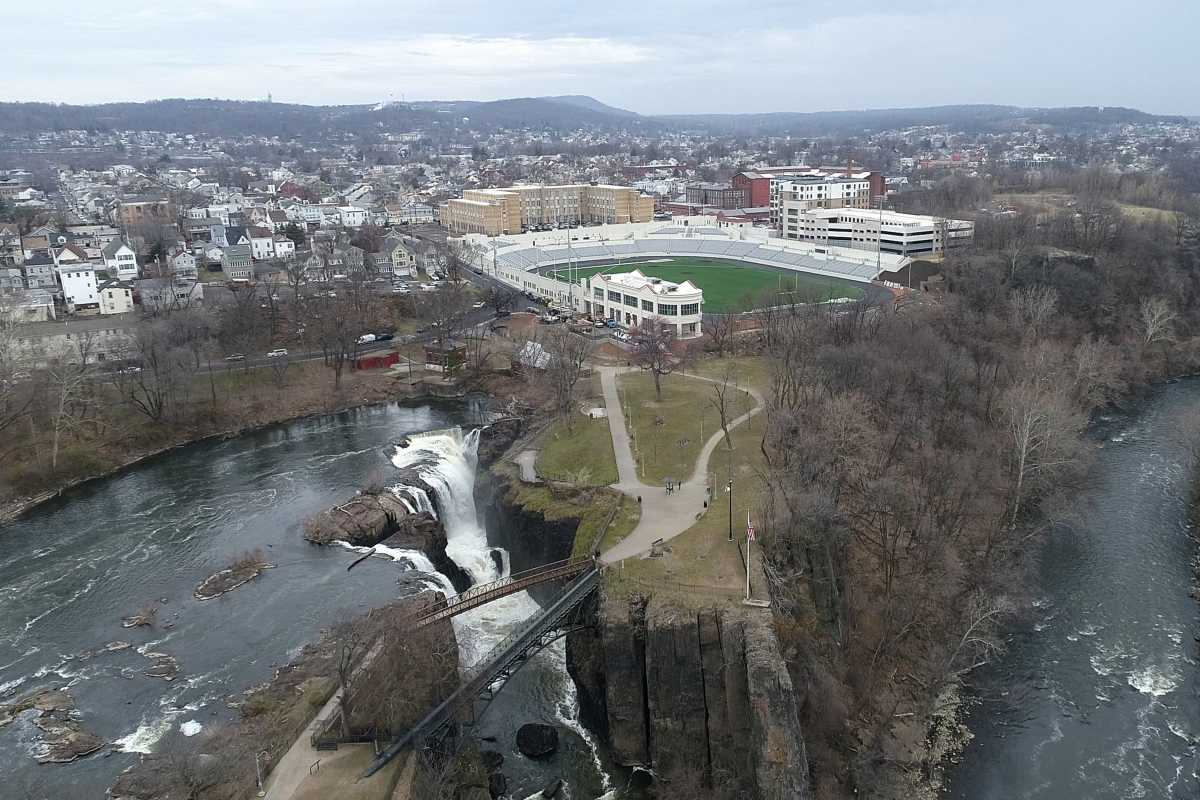
In 1963, the city sold Hinchliffe to the Paterson school system for $1. The school district reoriented the baseball diamond, which used to face the open end of the horseshoe and toward the Great Falls, rendering right field too short for competitive play. Through the ’70s and ’80s, Paterson, like many cities built on an industrial economy in an increasingly mobile society, suffered through hard financial times. The schools didn’t have the finances to maintain a 10,000-seat stadium.
I played a high school football game at Hinchliffe in 1977 for Seton Hall Prep. We beat Eastside, 26–0. Playing inside the horseshoe felt like exploring an abandoned mansion; you could see the neglect, but you could feel the grandeur and history. It was an honor to play in that hallowed space, regardless of its condition.
In 1983, in a last gasp of renewal, the Paterson schools invested in Astroturf and a urethane surface for the track. A sinkhole opened in the outfield (one in the infield had troubled the place from the start). The turf quickly faded and grew tattered. Meanwhile, in ’85, just 19 miles away, Roosevelt Stadium in Jersey City, where Robinson played his first game with the Dodgers’ Montreal farm team in ’46, was demolished.
The bulldozers seemed bound for Hinchliffe next. By 1992, Paterson schools were in receivership to the State of New Jersey. There was no money to keep up the old stadium. School leaders in ’94 threatened it with demolition. In ’96 they closed it.
Hinchliffe almost died not by bulldozer but by neglect. Its carcass became a visual cacophony of weeds, climbing vines, crumbling concrete and graffiti. No one even noticed the theft of two bronze plaques dedicated to local athletes, including Paterson’s 100-yard national sprint champion, Eleanor Egg Krattiger, “the fastest woman in the world,” until they turned up years later in a pawn shop.
The effort to revive Hinchliffe began in the early 2000s with a grassroots campaign when the Paterson Historical Preservation Committee petitioned in ’03 to include Hinchliffe on the list of National Register of Historic Places. Under “Areas of Significance,” per the form’s instructions, the committee wrote “Entertainment/Recreation” and “Ethnic Heritage—African American.” Under “Significant Person,” they wrote “Larry Doby,” the “Silk City Slugger” who became the first player to integrate the American League. The group won Historic Place status for Hinchliffe in ’04.
In 2009, President Barack Obama signed the Omnibus Public Lands Management Act, which designated the Great Falls as a National Historic Park and included a mandate to assess “options for the preservation of Hinchliffe Stadium.”
Four years later, Hinchliffe was named a National Historic Landmark (NHL), becoming the first site of any kind associated with the Negro Leagues to gain the designation, the first baseball stadium so designated (Wrigley Field was added in 2020) and only the fourth football stadium (after Harvard Stadium, the Rose Bowl and the Yale Bowl).
In 2014 a group called Friends of Hinchliffe Stadium asked for volunteers to come out one day to pull weeds and paint over graffiti. Eight hundred people turned out. Five years later, Sayegh, who was raised in Paterson and is the city’s first Arab American mayor, proposed $18.7 million in funds to reopen Hinchliffe. Two years later, under the determination of the Hinchliffe Master Urban Renewal project, ground broke on a $109 million renovation, which includes 76 housing units and is funded mostly with state tax credits.
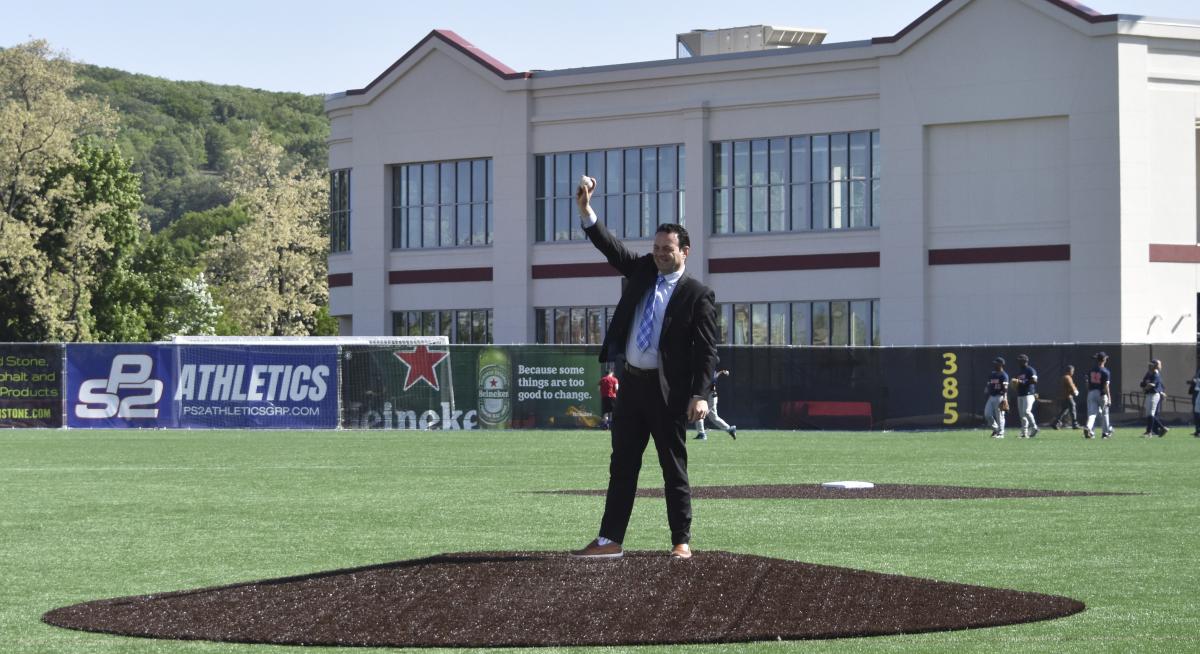
Last year, Chuck Muth, 67, a former soft drink executive who grew up in Paterson, donated $5 million to his alma mater, Montclair State, to build a museum at Hinchliffe dedicated to the Negro Leagues and the stadium’s history. Their stories will be told.
When Paterson applied for its NHL designation, its nomination noted that despite “years of vacancy and vandalism,” Hinchliffe remained remarkably intact, “if not the most intact” of stadiums associated with Negro Leagues baseball.
The nomination went on:
“The ultimate test for integrity for Hinchliffe Stadium is whether members of the New York Black Yankees, or Newark Eagles, or Cuban Stars, Bacharach Giants, Pittsburgh Crawfords, or any of the other teams that played there, or the spectators, or participants in the other sporting events of the 1930s would recognize the place if they were able to return. Undoubtedly, they would.”
How wonderful that all these years later we can recognize the place not just for its physical beauty but also for its historical significance. It took 27 years, but Hinchliffe is back. Its revival is not just about perseverance. It’s also about civil rights, opportunity, history and community and political willpower. And it’s about how the physical space of a stadium can still bond and inspire us.
On Friday, Sayegh can borrow the same line Mayor Hinchliffe used 91 years ago on these sacred grounds: “This athletic field will serve the interests of Paterson and its people long after the youngest among us has passed on.”

